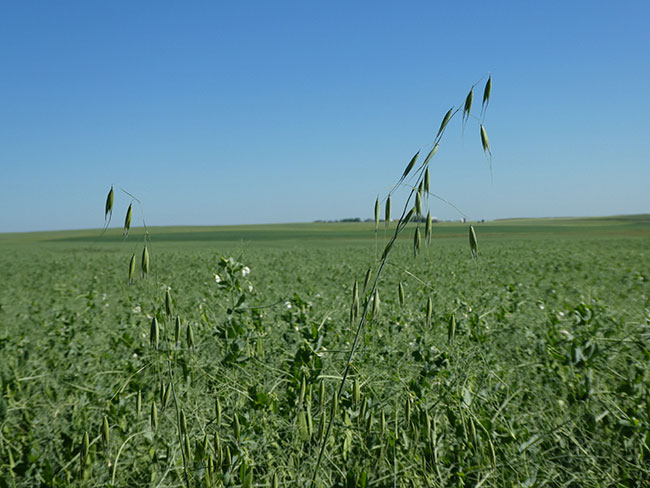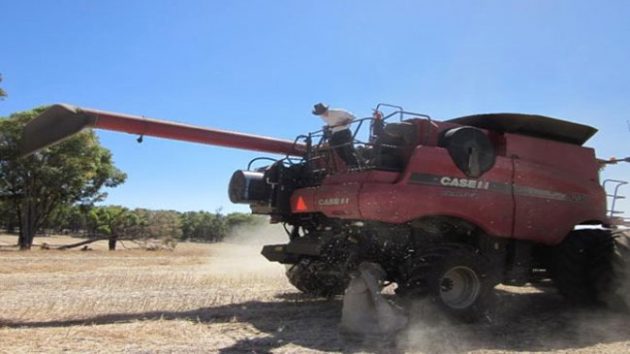
Features
Agronomy
Weeds
Herbicide resistance in Australia
Practical management approaches and tracking resistance trends are the name of the game.
August 5, 2021 By Hugh Beckie
 Canadian growers should be concerned about glyphosate-resistant wild oat. Photo by Bruce Barker.
Canadian growers should be concerned about glyphosate-resistant wild oat. Photo by Bruce Barker. Canada and Australia rank third and second globally when it comes to herbicide resistant weed cases. Hugh Beckie, director of the Australian Herbicide Resistance Initiative (AHRI) and professor of weed science at the University of Western Australia, discussed the similarities and differences in herbicide resistance between the two countries at the Top Crop Summit, Feb 23-24, 2021. He previously spent 26 years as a weed scientist with Agriculture and Agri-Food Canada in Saskatoon.
The Grains Research and Development Corporation, a federal Australian organization that funds research into crop and weed science, including herbicide resistance, established AHRI in 1998. AHRI is hosted at the University of Western Australia and has a 20-person multi-disciplinary team renowned for world-class research, development and extension in herbicide resistance.
Research conducted at AHRI ranges from the fundamental to the practical. One aspect of fundamental research, for example, is identifying genes that are responsible for herbicide resistance. Practical approaches focus on mitigating resistant weeds and providing solutions to growers to manage existing problems or avoid future problems.
In Western Australia, the most economically damaging herbicide-resistant weed is annual ryegrass, causing losses up to $100 million annually. Wild radish is the most important resistant broadleaf weed. It is very competitive, and is related to wild mustard in Canada. Both annual ryegrass and wild radish have widespread resistance to multiple modes of action.
In 2020, a herbicide resistance survey was conducted across Australia to provide an update on the status of the issue. The last survey was conducted five years ago.
An emerging issue for Australian farmers is the incidence of glyphosate resistance in weed populations. It is very low in the largest grain producing state of Western Australia, found in less than 10 per cent of fields. However, glyphosate resistance is becoming a problem in eastern Australia, particularly in New South Wales and Queensland, in annual sow thistle – a weed also commonly found in Canada.
Glyphosate-resistant wild oat has been confirmed in New South Wales and Queensland. Western Canadian growers should remain aware of the possibility of glyphosate resistant wild oat populations developing in their fields. They should look for signs of decreasing wild oat tolerance to glyphosate.
In Australia, public and private partnerships have made a concerted effort to raise awareness of herbicide resistance and its management with consistent messaging. The partnership is called WeedSmart and is headquartered at AHRI and the University of Western Australia.

ABOVE: Australian growers have widely adapted HWSC to manage the weed seedbank.
WeedSmart has six core messages for growers.
- Rotate crops and pastures. Include crop diversity and forages when possible to change weed selection pressure and increase the range of weed control options in a field.
- Double knock to preserve glyphosate burndown. Typically a glyphosate burndown is conducted before seeding. Ten to 14 days later, an alternative herbicide is applied to control weed escapes prior to seeding. The second herbicide is usually paraquat, which is available in Canada but not frequently used.
- Mix and rotate herbicides. This is the same message used globally.
- Stop weed seed set. Crop topping is the term commonly used to describe a method to stop weed seed set before harvest. In Australia, paraquat is often applied to pulse crops. In Canada, glyphosate is often used in a pre-harvest application.
- Crop competition. Australian growers use several components to improve crop competition with weeds. Adopting a narrow row spacing, as narrow as six inches (15 cm) using hoe or disc drills, is easily done with existing Australian seeding equipment. Seeding east/west gives crops more sunlight and shades the furrows to reduce sunlight for weeds. Increasing seeding rate and using a competitive variety also improves weed competition.
- Harvest Weed Seed Control (HWSC). Australian growers have used HWSC methods for many years. It is designed to prevent weed seeds from entering the seed bank. Techniques developed include chaff lining, chaff carts, narrow windrow burning and integrated weed seed destructors that mechanically destroy the seed.
The main differences between Australia and Canada are that Australian growers use double knock burndown applications, narrow row spacing, east/west seeding and a high adoption of HWSC. Australian growers also rely more heavily on pre-emergent soil residual herbicides because many post-emergent herbicides are ineffective due to widespread herbicide resistance.
Australian growers have been successful in managing herbicide resistant weed populations, and have been able to do it while still making money. They are generally optimistic because of the current and future introduction of new modes of action, which remains the most important weed control tool. The value of HWSC has been proven, even though it isn’t effective on all weeds.
The continuous improvement of crop varieties in terms of yield and weed competition is also reason for optimism. In 2025, wheat breeders in Australia will be introducing weed competitive genotypes bred to outcompete weeds.
Canadian growers, in particular western Canadian growers, should be optimistic that they can also profitably manage herbicide-resistant weeds. There is a need for public/private partnerships for research, development and extension. Consistent extension messaging from all stakeholders is important. Communicating grower experiences (testimonials) has been very impactful, whether it is one-on-one discussions, keynote presentations, or on social media.